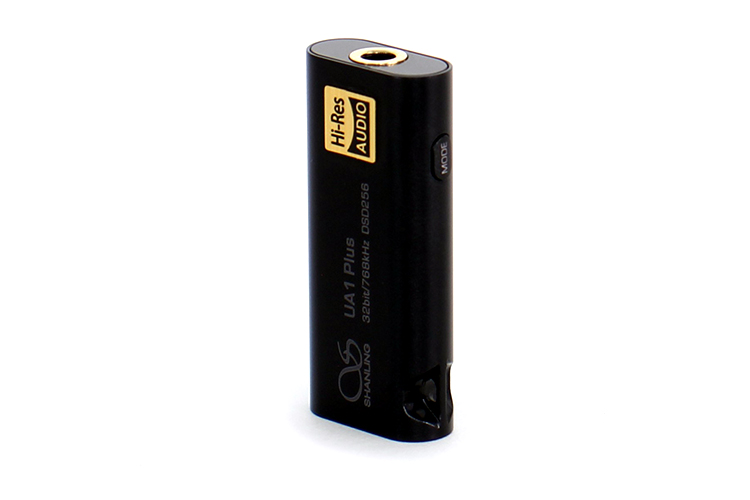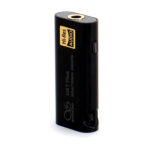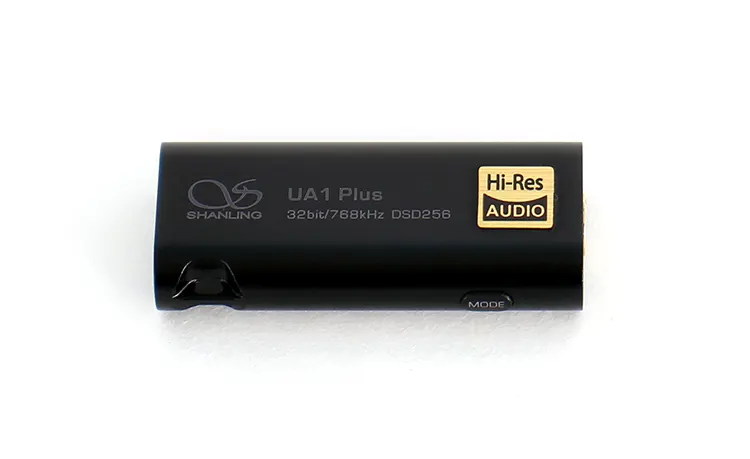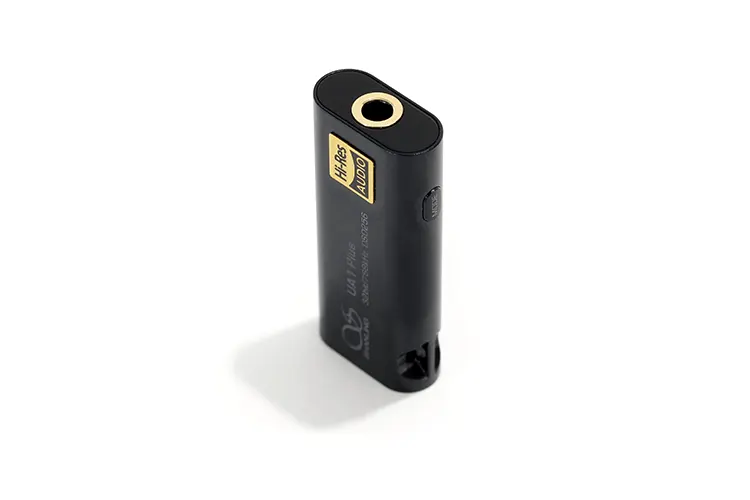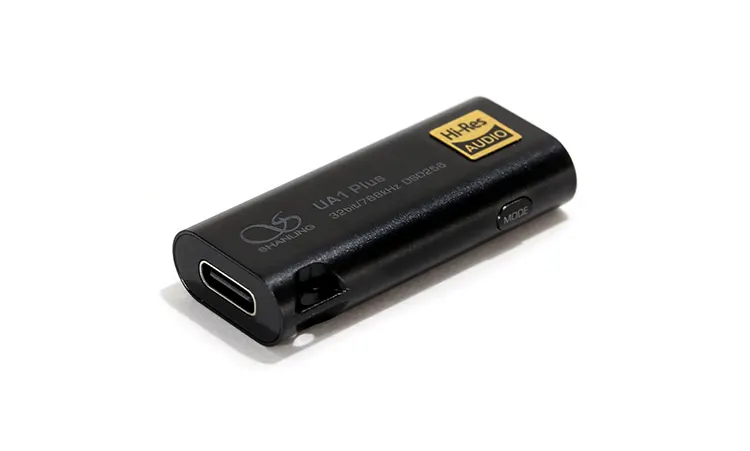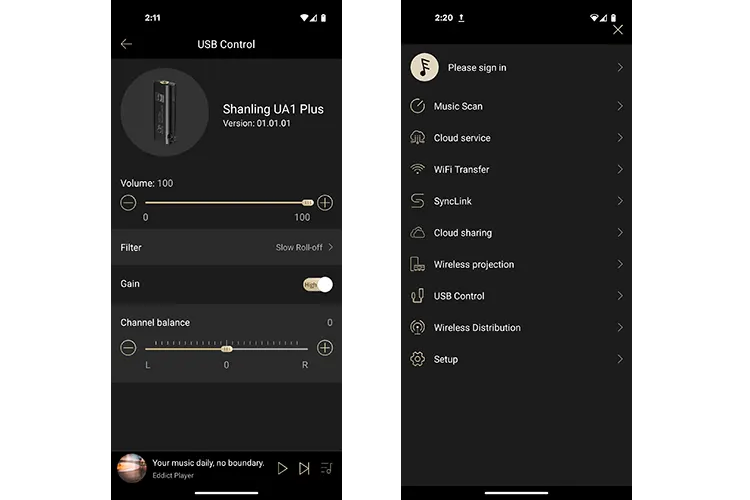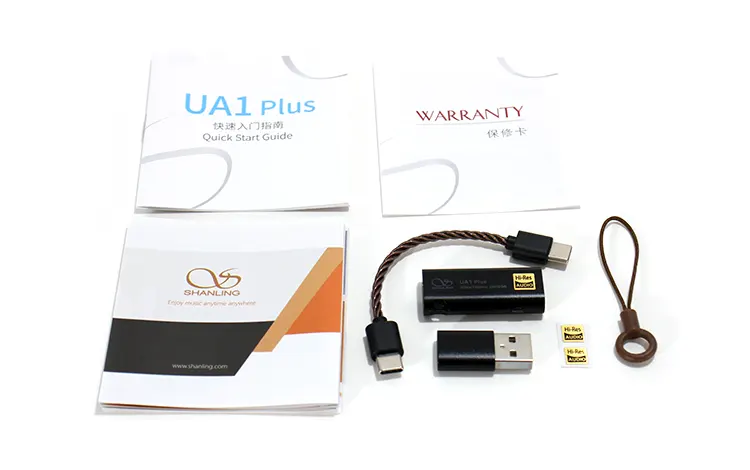In this feature, we review the Shanling UA1 Plus, which is an Android and iOS-compatible dual CS43131 dongle DAC with 80mW of output power. It is priced at $49 SRP.
Disclaimer: This sample was sent to us in exchange for our honest opinion. Headfonics is an independent website with no affiliate links or status. We thank Shanling for their support.
To learn more about Shanling products we previously discussed on Headfonics click here.
Note, that this article follows our latest scoring guidelines which you can read here.
Let’s talk about one of Shanling’s recent additions to their portable dongle DAC product lineup, the UA1 Plus. The product hook here seems to be that this model implements improvements surpassing the UA1 and the UA1s and sitting right under the UA2.
Shanling in this round implemented a double SOC configuration to improve upon DAC performance and fluidity inside the UA1 Plus which is still considered a budget model. But many times, that type of implementation comes at a loss in power efficiency.
However, the UA1 Plus also stakes a claim of being highly efficient and it seemed to be another design priority. Performance and efficiency; I can semi-quote Shanling. That’s what’s being offered here by Shanling.
So, if those two proclaims are met and are well implemented, the combination of that and other onboard features might make this dongle DAC model a worthy standout from the rest and something to consider, especially in its price tier.
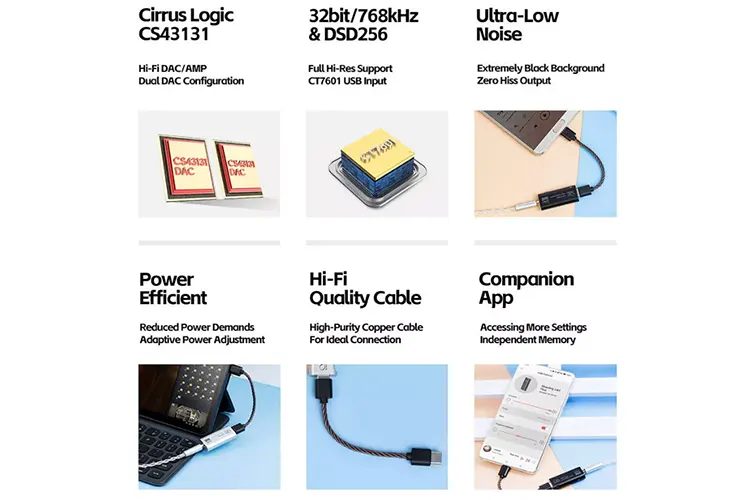
Tech Highlights
Shanling managed to squeeze in a couple of CS43131 MasterHIFi Audio chips from Cirrus Logic inside the small-statured UA1 Plus, which on paper claim the ability to individually drive 2 volts into a 600Ω load and produce near-perfect audio. I quote Cirrus Logic on that.
On the input side of the dongle, there’s a Comtrue CT7601 USB bridge. These are high-bit capable chips and run on a USB 2.0 bus but can also run on USB 1.1 platforms if need be. The 3.5mm output port is fed power via the two SOCs and can deliver up to 80mW into a 32Ω load SE.
To manage power efficiency, Shanling implemented a proprietary adaptive power management system that seems to work very well here. Not only is this dongle highly efficient, but it also runs cool to the touch all the time, even under heavy loads.
A lot of focus also went into ensuring that the UA1 Plus will not pick up stray interference even when in high wireless traffic areas. The shell seems impervious to interference since my mobile device or any other device could not provoke it to pick up stray signals. The UA1 Plus seems to be a well-shielded device.
Decoding
Surprisingly, the Shanling UA1 Plus is capable of handling 32-bit rates and up to a 768 kHz digital audio signal on standard PCM format. The UA1 Plus is also capable of DSD at up to DSD256. This device does not run MQA, however.
This specification could clue one in as to which CT7601 variant was used since it could only be the PM or PR variant which is good news. The other 7601 variants only reach 384 or 192 kHz max rates. If I was to take an educated guess I would say it’s the CT7601PR variant that’s being used here.
It seems the UA1 Plus caters more to Android platforms than others although it’s compatible with most other platforms, including Lightning connectivity-equipped iOS devices.
The Shanling software, for example, is not available for iPhone plus there’s no Lightning connectivity included inside the box. Lightning connectivity is a separate purchase item.
Design
The Shanling UA1 Plus is available in two color schemes, black and Titanium gray. The main body is small and only measures 40 x 17.7 x 8.2 mm. The 9.5-gram weight will not add too much bulk to the average combo IEM, mobile device, and cable setup.
The overall bulk of the shell is made from anodized aluminum except for the end caps. One useful feature is the implemented Lanyard slot. Shanling includes a Lanyard with each unit ordered inside the box or you can also use your own.
It’s a convenient feature to have. It doesn’t take up space, doesn’t add much to the production cost, and is easily implemented. Keychain audio is what this is.
I/O
The UA1 Plus has 2 onboard connections. One is a 3.5mm single-ended connection that is capable of 1.6 volts or 80mW per side at 32Ω and the other is the USB-C input.
There’s no balanced connectivity onboard but in exchange, this model sports a removable cable while its similar cousins, the UA1 and the UA1s do not.
I attempted to see if the 3.5mm plug had a pass-through feature that could use a 4-pin equipped IEM with an inline microphone but it didn’t work. That’s a necessary feature that only a few incorporate, unfortunately.
Multifunction Button
When I first saw the Shanling UA1 Plus, I assumed it had no onboard volume control and I was wrong. The UA1 Plus uses one multifunction button to accomplish a few things. First off, the button acts as a pause and play button with a single press. Second, a double press puts the button into volume mode.
The first double press will light the LED in a red color which indicates that the UA1 Plus button is in the volume-up mode. Another double press changes the LED to a Cyan color and that means the button is now in volume-down mode.
You have to do the double tap and execute the volume adjustment within 10 seconds. After that time the button will reset itself and go back to normal operation. I approve.
Software
Shanling’s software is called Eddict Player. I was confused at first because of a webpage visual cue. The website clearly shows an app called USB Control App. I couldn’t find it anywhere until I realized it was inside the Eddict player app.
The app has lots of features including cloud service and cloud sharing, NAS access, DLNA, WiFi transfers, and Synclink capabilities. It also has a feature that lets you encrypt all those wireless transmissions.
The player does offer a full equalizer and the ability to save EQ curve presets. It also picks up on lyrics and track information which can be displayed on-screen along with the track’s album art. Unless you prefer displaying the analog VU meter theme that’s selectable on the top right of the player’s main screen.
The player’s sound quality is okay but I have a couple of Android players that I’m partial to. My preferred player is Jet Audio Pro because it has many sound-shaping features and sounds superb to me.
The Eddict player for example lowers the gain levels when you enable the equalizer. So, the player tends to sound best when the EQ is in the off position. Shanling implements this feature to prevent hearing loss or overloading.
All the dynamics are best retained on flat but I thought I’d mention this for those who still use sound curve editors and equalizers. The dongle itself works fine with other players so you’re not exclusively obligated to use the Eddict Player app.
Packaging & Accessories
Packaging is simple and to the point. The lamination could use some color to make the packaging pop. It’s all done over in small amounts of light blue and gray ink on a white background. The Hi-Res audio sticker adds some color but the packaging needs more illustration.
Inside you’ll find the dongle along with a full-sized USB adapter that fits the included USB-C cable which is made from a twisted pair of high-purity copper wire.
Other inclusions are a Lanyard, a couple of extra Hi-Res stickers, and some literature that consists of a warranty information pamphlet, a quick start guide, and a product tour guide.
Sound Impressions
To get a better picture of what the UA1 Plus has to offer I tried to use highly common gear. I used some full-sized headphones including my trusty Sundara open back and a set of Phillips SHP9500.
However, this dongle’s forte lies in its ability to drive IEMs and that’s what I recommend using with the UA1 Plus. So, I used Helm Audio’s F2 planar IEMs along with some single dynamic driver IEMs like the ORIVETI OD100 and the OD200 plus FiiO’s FD7 and the FD5.
The non-oversampling filter was used during all the listening test sessions. A Windows 11-equipped custom rig was used and a Google Pixel with Android-based Lineage OS was also used.
Summary
For a low-budget device, the UA1 plus sound signature surely surprises the listener by serving up a full spectrum range in frequency response, balanced tonality, and an ample amount of extension both ways.
The overall neutral presentation is painted over a dark background that lets you focus on what’s playing. It’s a clean-sounding dongle that doesn’t produce any noise on its own.
It does have a mute feature implemented and it has a habit of skipping the first second of playback when you first use it. I couldn’t find a way to kick it out of safe mode like I could with other dongles which would have remedied this. I couldn’t locate an ASIO driver download on their page to do so.
I did throw it into a heavy multitrack scenario and it didn’t do well at high bit rates. I did notice some breakup. The remedy to that was to kick the device down to 44kHz and the problem was solved.
Most likely you won’t run into that situation on a mobile device. On a PC, however, it happened to me on a few occasions. As long as you don’t use it at a very high bit rate setting, the sound output will be solid and fluid.
Staging and Dynamics
The dongle’s dynamic response is ample but is shown more so with IEMs, not so much with full-sized headphones, especially at high volume.
The bass in particular is abundant when you use IEMs but the device loses a couple of decibels when using full-sized headphones. The Shanling UA1 Plus seems to be geared to work best with IEMs since it doesn’t have enough power to rattle full-sized headphones.
Staging capabilities are typical of the CS43131 chipsets. There’s a decent-sized panorama that attempts to produce proper placement but paints elements within the track in a larger manner that at times causes a loss in focus and pinpoint precision.
Click on page 2 below for our recommended pairings and selected comparisons.

